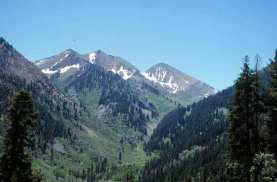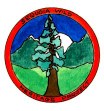Sequoia Wild Heritage Project

Mineral King Wilderness Proposal
See also Mineral King Proposed Wilderness Photo Gallery
National Park Service,
Sequoia-Kings Canyon National Parks
Location
Sequoia National Park
Description
The Mineral King potential wilderness is comprised of a half dozen roadless areas totaling nearly 50000 acres of remote and pristine wilderness that boast grand views, tumbling streams and towering forests. The steep, rugged landscape of this potential wilderness area ranges from low elevation blue oak woodland to montane red fir forests above 7,500 ft. In between is a diverse landscape of canyons and ridges clothed in chaparral, ponderosa pine, and giant sequoia. Not only botanically diverse, the Mineral King wilderness provides homes for black bears, mountain lions, bobcats, many breeding bird species, and more than a dozen species of reptiles and amphibians. Rarer animals include the southern spotted owl, fishers, Townsend's long-eared bats, and western pond turtles. Caves in some of the canyons contain stunning mineral formations and harbor endemic species.
Opportunities for recreation abound. Numerous trails provide access for day hikers, backpackers, and horseback riders. Hunting is permitted in the BLM parcels and whitewater kayaking is popular along the North Fork. The East Fork flows through a series of deep pools carved out of solid granite, while the North fork is notable for its numerous waterfalls. he North fork was the interface between two Native American cultures, and is also the site of the historic Kaweah utopian colony of the late 1800s.
The BLM determined the North and East Forks of the Kaweah River to be eligible for National Wild and Scenic River status in recognition of their outstanding scenic, cultural, and wildlife values. Wild & Scenic status prohibits new dams and ensures that the public lands are managed to protect the river's outstanding values.
For questions about this website or to volunteer to help out, please contact us at: info@sequoianet.org
